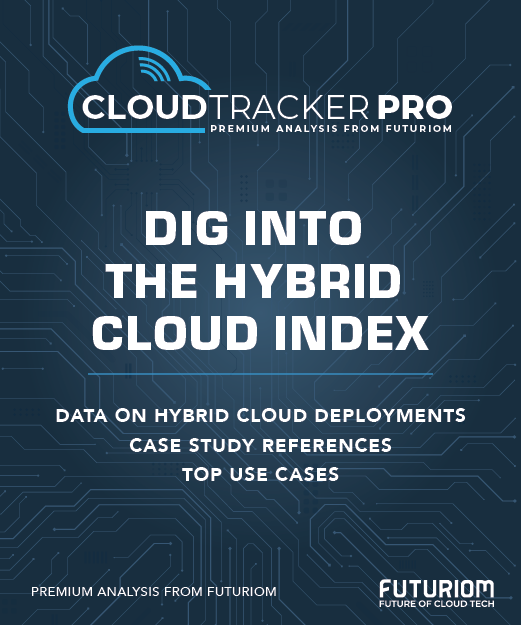Lumen & Equinix Vie to Connect the AI Cloud

We’ve written about how the “AI factory” concept has rewritten the rules for datacenter architecture and construction. Equinix and Lumen see something similar happening to datacenter interconnection—the network that connects these facilities to each other and to enterprise and public-cloud locations.
During separate analyst events recently, both companies stated their case to be the enterprise’s network fabric for AI workloads. Honestly, the products they’re talking about are useful outside of AI too, but consider how AI is evolving. Neoclouds are popping up in unconventional locations. Enterprises are leaning toward a hybrid model, combining public clouds and AI clouds with private AI, which could sit on-premises.
Data and applications could need to connect across any of these locations. That unpredictability calls for a more agile network.
A Bit of History
It’s admittedly arbitrary to mash Equinix and Lumen together, but the companies’ interest in networking advancements has been stronger than most of their peers’. Equinix was early to preach datacenter interconnection services as a key element of enterprises’ multicloud usage. Lumen, in its CenturyLink days, really “got” the promise of software-defined networking, and it beat most other telcos in finally offering a customer-controlled NaaS product.
Lumen, additionally, has embarked on a campaign to distance itself from the telecom world and even redefine what a service provider is. We’ll start there.
Lumen’s New ‘Unit of Economics’
CEO Kate Johnson, who joined late in 2022, is striving to radically rebrand Lumen. That includes products that are simpler and more self-service than the usual telco fare. Lumen’s network as a service (NaaS) offering, launched in 2023, lets customers sign themselves up and control parameters like network bandwidth on-the-fly—things that were promised in the 2010s but that most telcos have been slow to deliver.
Fabric Port, due for availability this quarter, is a bigger change. It refers to the physical port that a customer purchases, but this port is universal: It carries all of a customers services, from old-world telco offerings like internet on demand to security and other digital services.
Lumen wants Fabric Port to become the “unit of economics” for the customer, CFO Chris Stansbury said. It’s a radically simpler customer experience, and while it applies beyond the world of AI, it’s central to the company’s AI networking pitch.
Upending the Telco Rules
Then there’s Project Berkeley, which was announced last month by Dave Ward, Lumen’s CTO and a veteran of router vendors Cisco and Juniper.
Hardware-wise, it’s an on-premises access appliance; Ward called it the smallest router he’s ever designed. It comes with physical interfaces for pretty much every access type, whether copper or fiber, and it self-configures through zero-touch installation, much like a home broadband router.
What makes Berkeley special is the way it operates: It runs Lumen services over whatever physical network it’s connected to. Lumen remains the enterprise’s service even as it runs those services across other providers’ networks.
“We can connect any form of legacy access and turn that into modernity,” Ward said.
This matters because it dramatically expands Lumen’s footprint. Its physical network reaches roughly 170,000 buildings. With Project Berkeley, Lumen believes it can reach more than 10 million additional off-net buildings.
How does this relate to AI? Ward described what he calls “Cloud 2.0”—an AI-driven world where network concepts like headers and protocols aren’t relevant. What matters is location—connecting applications and data in a way that keeps expensive GPUs utilized as highly as possible. (AI applications create a lot of GPU down time as the accelerators wait for data.)
That means activating network connections among unpredictable locations, as described above, and being able to do it quickly enough to keep expensive GPUs from sitting idle while they wait for data. Lumen argues this requires a platform overseeing all this connectivity (“Do-it-yourself is dead in cloud 2.0,” Ward said) and a more agile touch that NaaS and Fabric Port represent.
Equinix: The Distributed AI Hub
Equinix, meanwhile, is using the brand Equinix Distributed AI to describe how its services can serve AI requirements. The idea is to let customers run AI workloads in the most appropriate settings: for example, neoclouds for training, edge locations for real-time inference.
It’s a continuation of Equinix’s interconnection thesis. Several years ago, Equinix began preaching the benefits of interconnection, setting up what would become Equinix Fabric: a software-defined network connecting its datacenters to one another and to public cloud on-ramps. Equinix wanted to be the hub for an enterprise’s multicloud footprint. Fabric now boasts 492,000 interconnections and more than 220 cloud on-ramps.
That footprint is starting to include AI clusters hosted at Equinix. Its xScale program, which uses joint ventures to finance projects suitable for hyperscalers, is in the midst of a $15 billion planned expansion that includes 1.5 GW of planned capacity in the US. The company expects to deliver as much capacity in the next five years as it did in the previous 27, CEO Adaire Fox-Martin said.
Aside from “more cowbell” (where cowbell means interconnections), Equinix is launching Equinix Fabric Intelligence, applying AI to run Fabric itself. This should help with capacity balancing and route optimization, among other things; it’s due for early 2026 availability.
One limitation of Equinix’s approach is that it’s designed for enterprises that are using Equinx’s datacenters. The company calling card has been that it’s a neutral hub for connecting into all clouds and service-provider networks—but Lumen argues that AI, especially in scenarios involving remote neoclouds, is steering traffic away from those neutral hubs.
The Next Network
Lumen is touching on a common refrain, that Equinix’s Fabric is built for Equinix customers. Equinix nonetheless has built a customer base for Fabric, and it’s positioning itself to help those customers navigate AI-driven traffic requirements.
This brings up an interesting point, though. These companies aren’t traditional competitors, but Lumen’s rebrand and the new geography of AI are bringing them into similar spaces.
It feels like there’s room for both. Equinix houses plenty of large enterprises, and multicloud interconnections tory has proven valuable to many of them. Fabric should be well suited for a lot of their AI needs. Lumen will have a much broader available footprint thanks to Project Berkeley, and its rebranding feels like the direction service providers in general should be taking.
















